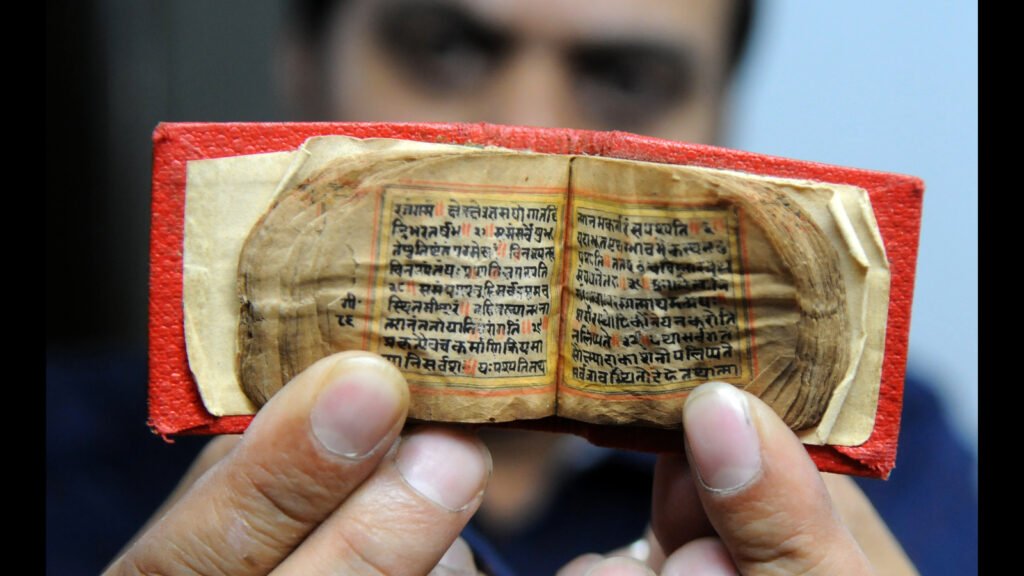
There was human habitation in India for thirds of years Prior to the emergence of sanskrit, and it is known that various languages existed; But we have no record of the languages that can help reconstruct the entry linguistic past. The Earliest Records of Oral Texts Date to About 35 Centuries Before The Present (BP), and The Earliest Records of Writing Date to 24 Centuries BP.

While Scripts Had Been in Use In Other Parts of Asia, West of India for 50 Centuries BP, Why the Indian Subcontinent Took So Long to Get Into Lexical Modes of Exposation Has Not Yeet Been Fully. Undeciphered so far, the sign system of the indus Valley Civilization Makes Any Historical Narrant of Indian Languages Incomplete and Tentative. Writing originated in India some 24 centuries bp in the form of inscriptions and hand-winding manuscripts. The writing culture was complete transformed when paper came into use about 10 centuries bp, and it experienced ahead ahead ahead shift shift shift shift two centuries bp with the advent of printed of the firing of the firing.
We still do not have any conclusive knowledge of the remote-ancient past of tamil and several other indigenous languages in existent the during the DURINCE DURINCE DURINCE DURNCE DURNNIUM BC in the Eastern Parts of India. We know that at a somewhat uncertain point in time, during the phase of India’s transformation from hunter-gatrer Society to Pastoral Society, A BRANCH OF A BRANC this TAMOTES TAMINT TAMINT TAMINTY SOTTY and Another to the Northwest. Nevertheless, The Precise Timing Remains Unknown.
Finally, it is still a mystery as to when exactly the languages described in gentic linguistics as islates – the nehali spoken in Maharashtra in Maharashtra’s Buldhana Distrist, for instance or Arrived in their present location. These are only some of the difference in presenting a clear history of the origin, Rise, and transformation of languages.
Over the last five Millennia, roughly from the Early Harppa Times to our time, the subcontinent accepted language legacies as distincts as distincts as the avestan of the zoroastriaans, the austroen Tibeto-Burman of the East and the Northeast Asia. The indic (or the indo-aryan) languages in the Northern States, Togeether with the Dravidic Languages in the South and the Tibeto-Burman Languages in the Northeast, Each with a Great Variety of Sub-Branches-Make for the Larger Bulk of the Indian Languages.
Throughout the knowledge history of the subcontinent, there has been an active exchange and metural osmosis between the indigenous languages and the migratory languages, production, in the prose, in the process, Great literature in Maany Tongues. In the past, Pali, Sanskrit, and Persian Acquired currency over the subcontinent’s extended geographical areas. Yet, The Local Languages - The Prakrits and Apabhramsas (in the case of sanskrit) and desi-bahashas (in the case of Persian) – Continued to Thrive. Over time, they Gained Greater Currency and, in Various Amalgamated Forms, overshadowed the Supra-Languages. The Intimate Love-Hate Relationship Between Indian Languages and the English language over the last two centuries is developing precisely Along the same trafficory.
However, this neat separation of a Given language from its surrounding languages, in theory, does not accurately reflective the ground reality of the existing languages. In order to get a picture of that, one must look into the figures provided by the census. These figures show that the languages listed in the eighth schedule have a much larger number of speakers than that there are not included. The only exception to this is that of English. This increment is caused not only by the general population growth in different linguistic states but also by the decline of the languages not included in the schedule. The decline is natural (and probally expected by the policymakers)
In the year to come, the other languages-Mostly spoken by adivasi communities and thatest belonging to the austro-monatic family and the tibeto-babeto-babeto-babeto-babean family-May disappation Indicator. That is to say that while the diction and the syntax patterns of these languages will no doubt survive, there may be a greatness assimilation of these in the main language of India. Whether this is desirable or not is a question that not only the cultural anthropologists but also all of us have to answer.
As for the main languages, the picture of their development is a mixed one. On the one hand, there is an unprecedented growth in the printed materials in these languages, and naturally so, Given the Multiplication of Print Capitalism and Digital Technology from the 19th Centuri Till No; on the other hand, the English language has come up as the Major Adversary to these languages. Many members of the class that, during the 19th century, advocated the cause of the Major Indian Languages have turned to English As such, there has been a sharp decline in the number of readers of literature in Indian languages in cities and semi-recurrent area.
GN Devy, Author and Founder of People’s Linguistic Survey of India, is Director, Somaiya School of Civilization, Somaiya Vidyavihar University. The views expressed are personal




